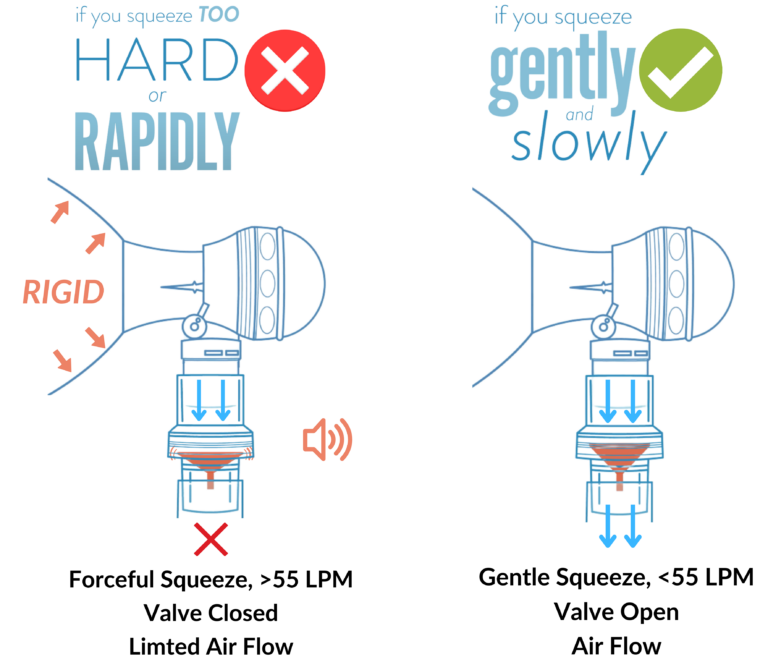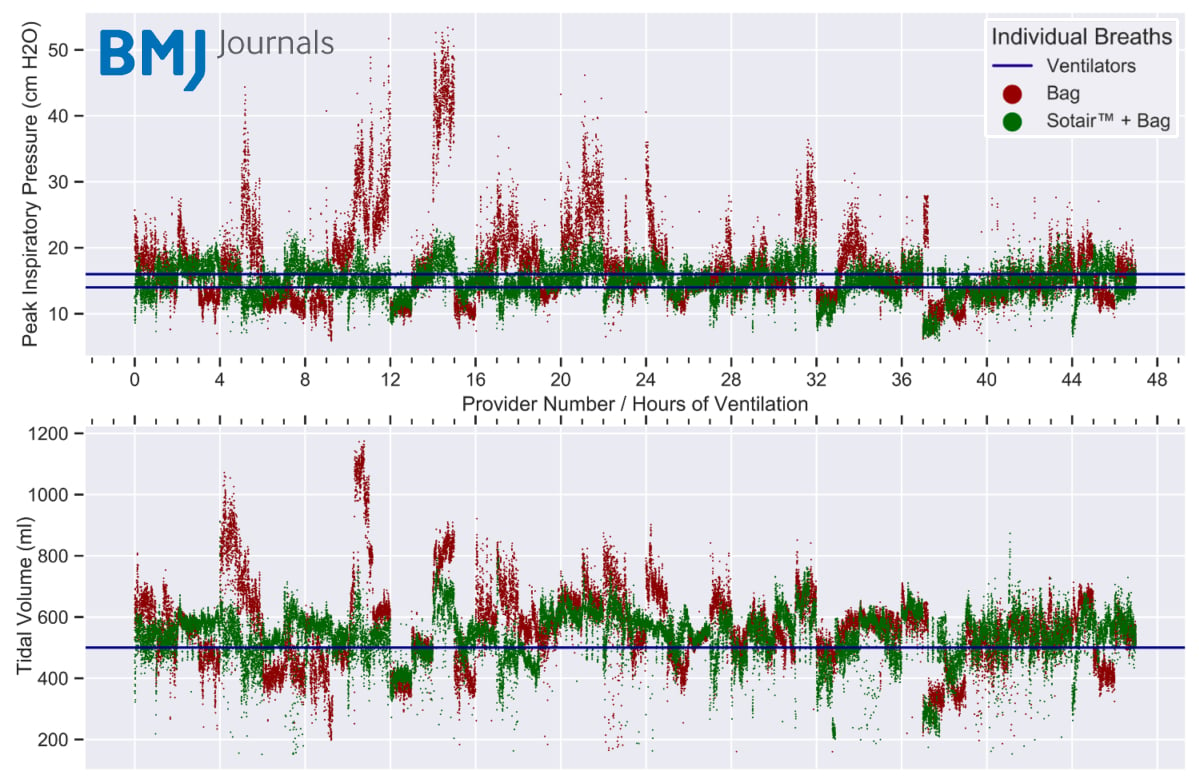98%
71%
The Solution
SafeBVM’s flagship innovation, the award-winning Sotair device, is primarily funded by grants and contracts from the NIH, NSF, and the Military. Sotair revolutionizes manual ventilation with its flow-limiting valve, ensuring providers deliver air at peak flows of less than 55 LPM, thereby preventing high peak air pressure delivery. This regulation of airflow has also been shown to reduce the risk of overventilation and hyperventilation.
Sotair’s user-friendly design requires only 30 seconds of training. The device offers multi-sensory feedback (haptic, auditory, visual) to guide providers in real-time, enhancing adaptability and consistency while reducing variability in performance during manual ventilation.
How Does Sotair® Work?
When flow rates delivered with the bag exceed 55 L/min, the device activates and limits the flow of air providing haptic, auditory, and visual feedback to the user.

Dynamic Pressure Delivery
While Sotair has a static flow limit of ~55 LPM, the output peak pressure delivered to the patient is dynamic depending on the patients lung compliance and resistance. For example, for an average adult with healthy lungs, Sotair’s flow limit of 55 LPM corresponds to a maximum peak pressure delivered of approximately 20 cmH2O, when air starts to enter the stomach. In other the disease states like COPD, Asthma or ARDS, the peak pressure generated by the user may be in the 20-30+ cmH2O as they have decreased lungs compliance and/or increased airway resistance.
The ADULT Sotair® Device in the British Medical Journal, Innovations
Sotair® Performance, Closer to a Ventilator's
Peak pressures (p>.0001) and tidal volumes (p>0.0001) were significantly improved with the Sotair® device and authors concluded that extended manual ventilation may be feasible with a safety device, which may reduce barotrauma, under-ventilation and over-ventilation.10
References



